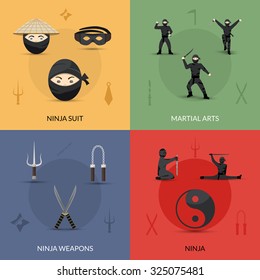The Chronicle And Growth Of Martial Arts: An Assessment Of Its Historical Beginnings And Advancement Into Modern Techniques
The Chronicle And Growth Of Martial Arts: An Assessment Of Its Historical Beginnings And Advancement Into Modern Techniques
Blog Article
Web Content Author-Delaney Sun
Enter the globe of martial arts, where old beginnings and modern methods clash in an exhilarating journey of self-control and self-discovery.
As what's the best martial art to use on a kid delve into the history and evolution of this exciting art type, prepare to be astounded by the cultural influences, technical developments, and extensive ideology that have formed it over centuries.
From the combat zones of old worlds to the training premises these days, martial arts have actually stood the test of time, frequently adapting and growing.
Each strike, each activity, lugs with it the weight of numerous years of custom and wisdom, passed down with generations. This is a story of durability, of warriors who looked for not only physical prowess, but additionally inner strength and harmony.
Join us on this remarkable expedition as we uncover the keys, the tales, and the transformational power of martial arts.
Get ready to be motivated, tested, and for life transformed by the background and advancement of martial arts.
Social Impacts on Martial Arts
As you discover the background and evolution of martial arts, you'll rapidly uncover the fascinating ways in which cultural influences have formed these fight techniques.
From the old worlds of China and India to the more current advancements in Japan and Brazil, martial arts have been greatly influenced by the cultures in which they originated.
As an example, Chinese martial arts, such as Martial Art and Tai Chi, are deeply rooted in the approach of Taoism and the principle of Yin and Yang.
On the other hand, Japanese martial arts, like Karate and Judo, mirror the samurai warrior customs and the values of self-control and honor.
In a similar way, Brazilian martial art, Capoeira, combines elements of African dance and songs, showing the social heritage of African servants in Brazil.
These social affects not just give each martial art its unique characteristics yet additionally provide a much deeper understanding of the historical and social contexts in which they progressed.
Technological Developments and Martial Arts
With the increase of innovative weapons and ingenious training devices, you've had the ability to boost your abilities and adapt to the ever-changing fight landscape.
Technological improvements have revolutionized the means martial arts are exercised and taught. Virtual reality simulations now permit you to train in practical fight scenarios without the threat of physical damage. High-speed video cameras capture every action, enabling you to evaluate and best your methods. Wearable devices monitor your heart rate, breathing, and muscular tissue activation, providing instant comments on your efficiency.
Additionally, the development of specialized tools, such as resistance bands and agility ladders, has actually enabled you to boost your speed, toughness, and agility. These technological improvements have not only made training a lot more efficient yet have actually likewise pressed the borders of what is possible in martial arts, enabling you to get to brand-new heights in your practice.
The Approach and Principles of Martial Arts
The approach and concepts of martial arts are deeply rooted fit your attitude and instilling self-control, focus, and respect in your practice.
1. State of mind: Martial Arts teaches you to establish a solid and resilient state of mind. It enables you to get over obstacles both on and off the mat, pushing your limits and being determined despite adversity.
2. Technique: Martial Arts demands discipline and self-constraint. With normal training and adherence to rigorous guidelines and techniques, you learn to control your impulses and establish a strong work ethic.
3. Emphasis: Martial Arts needs intense focus and focus. By training your mind to be present in the moment, you boost your capacity to react rapidly and successfully throughout fight circumstances.
4. Respect: Martial Arts highlights regard for oneself, trainers, training partners, and opponents. It teaches you to value the skills and experiences of others, promoting a sense of friendship and gamesmanship.
Conclusion
Congratulations on finishing your trip via the captivating globe of martial arts! Throughout https://martialartskids98754.bloggerbags.com/35033658/discover-the-dynamic-area-of-fighting-styles-this-comprehensive-guide-exposes-the-differences-between-karate-and-kung-fu-embrace-your-inner-warrior , you have seen the rich history and remarkable advancement of these combat methods.
From their ancient origins to the modern-day techniques we see today, martial arts have actually been formed by cultural influences.
The integration of technology has likewise played a considerable duty in transforming the way martial arts are shown and practiced in the here and now day.
Nonetheless, it is very important to bear in mind that martial arts are more than simply physical fight. They include extensive approaches and directing principles that exceed the plain act of fighting.
Take a minute to reflect on this obsolete adventure and appreciate exactly how the tradition of martial arts remains to prosper in the present, transcending time and limits.
